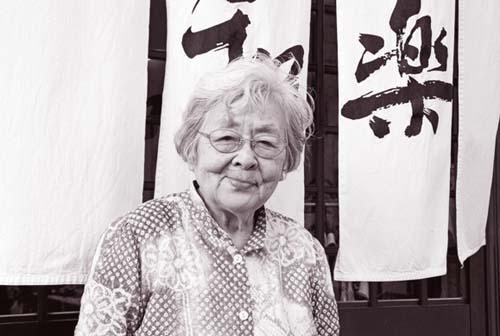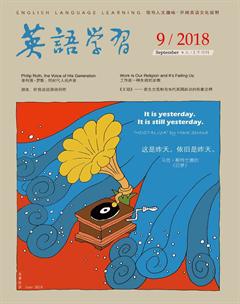退休?不,还没到时候。
By Takehiko Kambayashi

In this sleepy, mountainous city, 85-year-old Yoshiko Zakoji starts her day with exercises before cooking rice and simmering vegetables for pre-ordered boxed lunches—as she has done for more than a decade.1
“I need to keep myself fit to continue my business,” says Ms. Zakoji, who owns a shop in Iida2, located 110 miles west of Tokyo. She calls it Waraku: a name that evokes opening up to each other, and having a good time.3
Zakoji opened the shop in 1992, after her husbands retirement. She was a homemaker with no work experience, and 60 years old—just when her generation was starting to rely on the pension system.4
Before opening day, she recalls, some people rolled their eyes. “What on earth are you going to start?” they asked.
Female entrepreneurs are not the norm in Japan, which, despite a push for “womenomics” from Prime Minister Shinzo Abe, has one of the biggest employment gender gaps among developed countries.5 About two-thirds of women now work, but more than half of their positions are part-time or “irregular,”6 and many women are expected to stop working after they become mothers.
But before long, Zakoji had built more than a shop: shed created a community. Waraku sells traditional food, boxed lunches, and handcrafted goods made by locals and acquaintances, including disabled residents. She set up a nonprofit, too, offering classes on pottery and flower arrangement.7 And when some locals started to frown at newlyarrived foreign residents—whose experiences reminded her of her own sisters difficulties after moving to Canada—she was inspired to start an international exchange, where volunteers help tutor Japanese, math, and other subjects.8
Its a benefit for Iida and some of its most isolated9 residents. But Zakojis adventure also highlights that of a number of older women forging new paths through entrepreneurship—ventures that often bring isolated neighbors together, and are redefining what a rapidly “graying” society can look like.10
She encourages other elderly people to start their own business, or play a larger part in their local communities.
“When people get together, something will start to happen, and something will be created,” Zakoji says.
In Japan, people aged 65 or older will account for 38 percent of the total population in 2065, up from nearly 27 percent in 2015, according to the Tokyo-based National Institute of Population and Security Research.11 Statistics like that concern many economists, particularly paired with the countrys birth rate, one of the lowest in the world. They are an underlying impetus for“womenomics,” as low-immigration Japan considers how to boost its workforce.12
But “women in their 60s these days have more strength than the same age group a decade ago,” says Atsuko Arisawa, the director of non-profit organization Rokumaru 60—a play on the words for “six” and “zero.”13 The organization helps women, especially those in their 60s, improve job skills and find work or start their own business.
Traditionally, Japanese mothers have most responsibility for child-rearing, while “salaryman” corporate culture keeps mostlymale workers at the office into late evening hours.14 But even when kids are older, or have left home, women seeking a career face an uphill15 battle. In 2016, the World Economic Forum16 ranked Japan 111 out of 144 countries on gender equality.
“Its still very difficult for women to reenter the countrys workforce following the birth of a child,” says Fumie Kuratomi, director of the Fukuoka Gender Studies Institute17. “If you are a married woman over 35 in Japan, its hard to find even a temporary job.”
Abes government is “far from serious about creating work-life balance for working mothers,” adds Ms. Kuratomi, who is also a sociologist at the University of Teacher Education Fukuoka.
In the autumn of their lives, many women “finally reach a point where they can do what they want to do after staying at home to raise children and take care of their husbands,” says Ms. Arisawa, a former editor of a community newspaper. “They want to make their desire a reality.”
For many of these entrepreneurs, Arisawa says, making profits is not the first priority.
“So many women want to contribute to a community and bring pleasure to others,” she says.
Helping neighbors connect
In an area called “Hill of Hope”in the city of Yokohama18, near Tokyo, Maki Gomi, who has long volunteered to help local elderly people, opened Café Heartful Port at her home three years ago.
Since its opening, the 300-sq.-ft. cafe has drawn more than 10,000 customers, from teens and parents with babies to elderly people, and holds seminars and small concerts to help residents interact with one another.19
“We need to make communitybuilding more interesting,” says Ms. Gomi.
With a community turning gray, and the number of nuclear families20 rising in a Tokyo suburb like Yokohama, such interaction is important. Elderly people and a family member looking after them can be isolated, says the mother of three grown children. Isolation is a problem for many young families, too: intense schedules that send kids straight from school to extra tutoring classes are common, leaving less time for activities that bring the generations, or the neighborhood, together.
Gomi had their first floor of the house renovated in order to launch the cafe, where she had cared for her aging mother-in-law until her death in 2011.
In September, the cafe will start a program to serve those with dementia21 and their family members, while they have already had a monthly program for children in low-income families.
“We need a framework in which residents can help each other,” Gomi says. “Building a community starts by raising local awareness of issues.22 A community problem should be solved within the community. Its not a good idea to turn to authorities instantly.”

1. simmer: 炖;pre-ordered: 预订的。
2. Iida:(日本)饭田市。
3. 她把这家店命名为Waraku,寓意大家都能敞开心扉,坦诚相待,快快乐乐地生活。
4. 她是一位家庭主妇,没有任何的工作经验,而且已经60岁了——大部分同龄人都开始依靠退休金生活了。homemaker: 家庭主妇;pension system: 退休金制度。
5. 在日本,女企业家并不常见。尽管首相安倍晋三曾发起一场“妇女经济”的热潮,但日本仍旧是就业人员性别差异最大的几个发达国家之一。entrepreneur: 企业家;norm: 惯例;womenomics: 妇女经济;Shinzo Abe: 安倍晋三,现任日本首相。
6. irregular:(此处指员工)非正式的,不稳定的。
7. pottery: 陶艺;flower arrangement:插花。
8. 后来,社区里新来了一些外国居民,这引起了一些本地居民的不满。这让她想起自己远在加拿大、同样因为是异乡人而遇到诸多困难的妹妹。受此启发,她开设了国际交流项目,邀请志愿者教授日语、数学等课程。
9. isolated: 孤獨的,离群索居的。
10. 不仅如此,Zakoji的大胆行为也突出表明,有一群年长女性正在努力通过创业寻找新的出路。这一举动试图将孤独的邻居们召集起来,也正在重新定义人们心中迅速扩大的“灰色社会”,即“老龄化社会”的样子。forge: 开创;gray society: 灰色社会,即老龄化社会。
11. 据位于东京的国家人口和社会安全研究所的调查表明,预计到2065年,日本65岁及以上人群将占总人口数的38%,而在2015年,这一比例还只有27%。
12. 鉴于日本移民率偏低,这些成为了“妇女经济”发展的潜在动力,以作为增加日本劳动力数量的一种对策。underlying: 潜在的; impetus: 势头,动力。
13. 但是,“和10年前相比,现在60岁左右的妇女更加健康了,”Atsuko Arisawa说,她是非营利组织Rokumaru 60的负责人——Rokumaru结合了“六”和“零”两个数字的日语读法。
14. 在日本,一直以来母亲需要承担更多抚养子女的责任,而“工薪族”企业文化则促使员工——主要是男性——在办公室工作到很晚。rear: 抚养,培养。
15. uphill: 逐渐上升的,日益艰难的。
16. World Economic Forum: 世界经济论坛。
17. Fukuoka Gender Studies Institute:福冈性别研究学院。
18. Yokohama:(日本)横滨市。
19. 300-sq.-ft.: 300平方英尺;seminar: 研讨会。
20. nuclear family: 核心家庭,由夫妻和子女组成的小家庭。
21. dementia: 痴呆症。
22. 为了建立一个社区,首先我们需要提高当地居民的问题意识。

